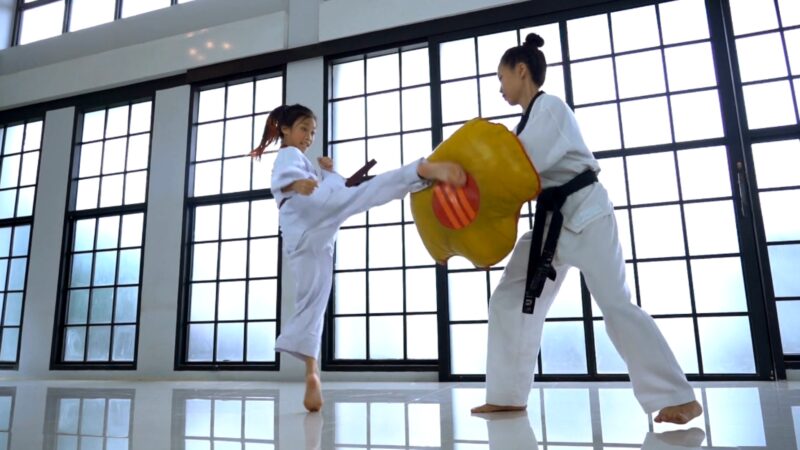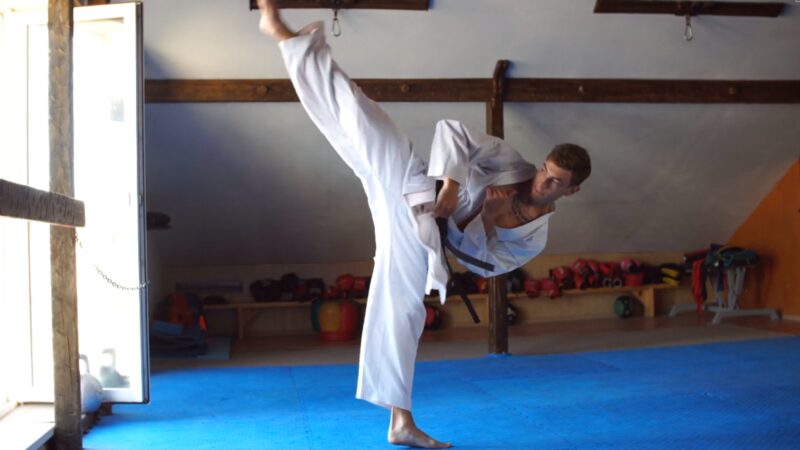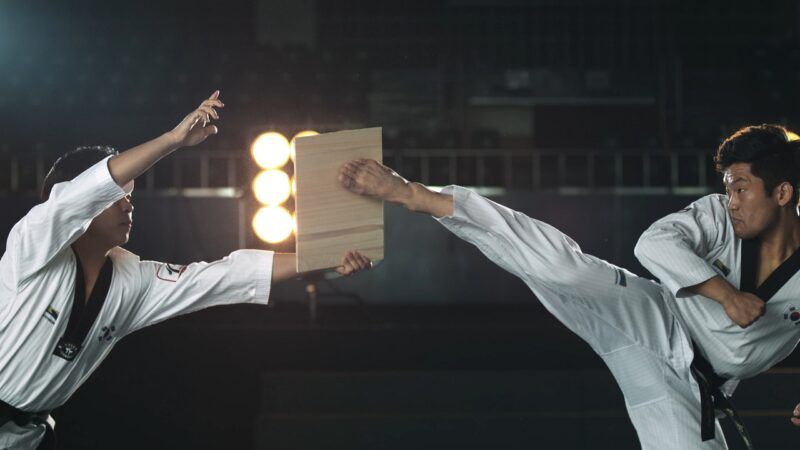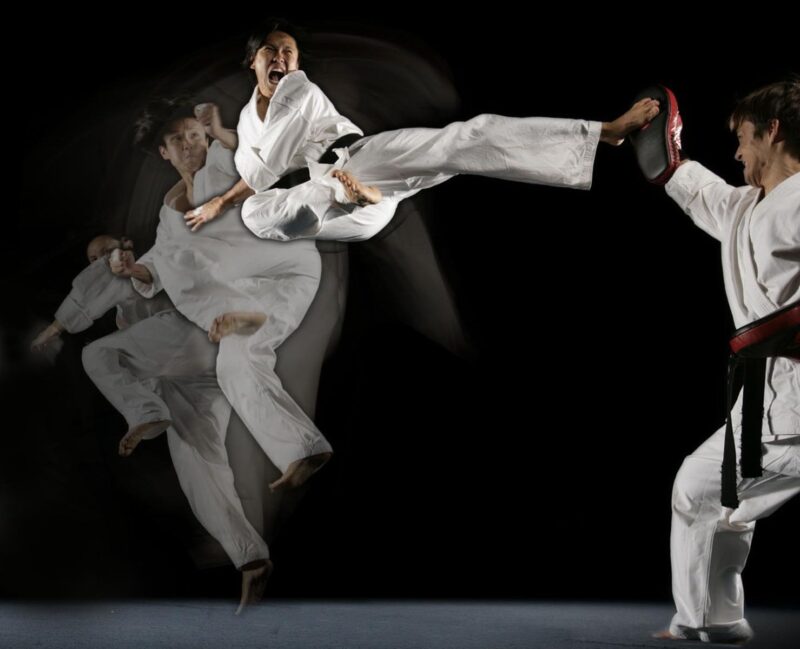Conditioning for taekwondo is crucial for achieving optimal performance in this demanding martial art. It involves training your body to withstand the sport’s rigorous demands, characterized by explosive bursts of energy followed by brief periods of recovery.
By implementing effective conditioning methods, you can enhance your speed, power, agility, and endurance, gaining a competitive edge. Here, we’ll explore some evidence-based conditioning strategies to elevate your taekwondo skills.
Training for Conditioning
Conditioning for taekwondo is not just about running or lifting weights, as in judo. It is about training your body to adapt to the specific physiological and biomechanical demands of the sport.
Taekwondo is a complex and dynamic activity that involves various energy systems, muscle groups, and movement patterns. To condition, you need to consider the following factors.
Effort to Pause Ratio

This is the ratio between the duration of high-intensity effort and the duration of low-intensity recovery in a taekwondo match. The average effort-to-pause ratio in a match is 1:7, meaning that for every second of high-intensity effort, there are seven seconds of low-intensity recovery.
This ratio can vary depending on the level of competition, the style of fighting, and the rules of the match. However, it is a useful guideline to design your conditioning program.
Energy systems

These are the systems that provide energy for your muscles to contract and perform work. There are three main energy systems: the aerobic system, the anaerobic alactic system, and the anaerobic lactic system.
The aerobic system uses oxygen to produce energy from carbohydrates, fats, and proteins. It is the most efficient and sustainable energy system, but it is also the slowest.
The anaerobic alactic system uses stored creatine phosphate to produce energy without oxygen. It is the fastest and most powerful energy system, but it is also the most limited and fatiguing.
The anaerobic lactic system uses glucose to produce energy without oxygen, but it also produces lactic acid as a by-product. It is the intermediate energy system, but it is also the most uncomfortable and exhausting. Each energy system has a different contribution and importance in taekwondo, depending on the intensity and duration of the effort.
The aerobic system contributes about 60% of the total energy expenditure in a taekwondo match, the anaerobic alactic system contributes about 30%, and the anaerobic lactic system contributes about 10%. Therefore, you need to train all three energy systems, but with different emphasis and priority.
Physical profiles

Taekwondo performance is influenced by physical characteristics like strength, power, speed, agility, flexibility, balance, coordination, and endurance. Each profile contributes to different aspects of taekwondo techniques and strategies.
While all profiles are important, emphasis varies depending on the technique type and phase. Strength and power are prominent during powerful strikes, while speed and agility are crucial for evasive maneuvers.
Flexibility and balance are important for high kicks and stability. Coordination and endurance ensure consistent performance.
Taekwondo training should develop all physical profiles, with varying focus depending on techniques and strategies. By addressing each characteristic effectively, practitioners can enhance overall performance and achieve greater success.
Aerobic and Alactic Energy Systems
Based on the effort-to-pause ratio, the physiological demands of a match, and the physical profiles of elite-level taekwondo athletes, a training schedule emphasizing the aerobic and alactic energy systems would make sense. These are the energy systems that allow you to perform high-intensity efforts repeatedly and recover quickly between them.
They are also the energy systems that are most trainable and adaptable to taekwondo. To train these energy systems, you need to use different methods and exercises, such as:
Alactic power
Alactic power is the ability to produce a maximal amount of force in a short period of time, using the anaerobic alactic energy system. It is important for taekwondo because it allows you to execute powerful and explosive techniques, such as kicks, punches, and jumps.
Alactic power is generally developed with strength and power training in the gym. Various jumps throws, and hops for sets of 2-6 with full recovery between sets.
This can also be developed by throwing various powerful kicking combinations for 7-10 seconds with full recovery between sets which will range between 2-5 minutes but this cannot replace the strength and power in the gym.
| Week | Exercise | Set/Rep | Rest |
|---|---|---|---|
| Week 1 | Bag Work | 5 x 7 sec | 2-3 min |
| Week 2 | OR | 7 x 7 sec | 2-3 min |
| Week 3 | Jumps/Throws | 9 x 7 sec | 2-3 min |
| Week 4 | 11 x 7 sec | 2-3 min |
Alactic capacity
Alactic capacity is the ability to sustain high-intensity efforts for a longer period of time, using the anaerobic alactic energy system. It is important for taekwondo because it allows you to maintain your power and speed throughout the match, especially in the final rounds.
Alactic capacity intervals sit right in the range of the 1:7 effort-to-pause ratio. Here we can develop the ability to sustain high-intensity efforts. It’s important that you perform this type of conditioning (and almost all of your conditioning) as close to taekwondo as possible.
Recent research compared a repeated sprint training protocol (10 x 35m sprints with 10-sec rest) to a repeated high-intensity kicking technique protocol (10 x 6-sec Bandal-tchagui with 10-sec rest). Both groups similarly improved physical markers such as aerobic ability and power.
However, the kicking group performed a greater number of techniques with the non-dominant leg during the 10-second specific kicking test compared to the sprint group and posted a lower blood lactate value after a 1-minute kicking test. Conditioning is more than just general physiology. You must be conditioned to perform the movements of your sport for it to have the best transfer.
Here is an example of how you could use this using the guidelines of 10-12 x 10-15 seconds with 20-90 seconds rest.
| Week | Exercise | Set/Rep | Rest |
|---|---|---|---|
| Week 1 | Bag or Pad Work | 10 x 10 sec | 70 sec |
| Week 2 | 12 x 10 sec | 70 sec | |
| Week 3 | 2 x (10 x 10 sec) | 70 sec between reps, 6-8 min between sets | |
| Week 4 | 2 x (12 x 10 sec) | 70 sec between reps, 6-8 min between sets |
Aerobic capacity
Aerobic capacity is the ability to produce energy using oxygen for a long period of time, using the aerobic energy system. It is important for taekwondo because it allows you to recover faster between high-intensity efforts, reduce fatigue, and enhance your overall health and well-being.
Your heart rate should be between 120-150 BPM and closer to 130-150 BPM when performing standing exercise. The Polar heart rate monitor is what I use and highly recommend as the most accurate and cost-effective heart rate monitor on the market.
If you are training a lot of taekwondo, these sessions are best tacked on to the end of your technical training. 20-30 minutes a few times a week adds up. If you are not training as often, you can bump these session durations up to 90 minutes. Ideally, these are done through shadowboxing/taekwondo techniques to provide extra skill work on top of the conditioning effect.
If your taekwondo training load is already very high (e.g. twice a day most days), then performing general off-feet modalities is a good substitute such as biking or swimming. Maintain a steady state effort for the allotted time and depending on your training load, frequency, and goals.
FAQ
How does conditioning differ from general fitness training?
Taekwondo conditioning specifically targets the sport’s unique demands, focusing on an effort-to-pause ratio and energy systems relevant to the martial art. This includes training for explosive energy, rapid recovery, and sport-specific movements, unlike general fitness which may have broader goals like overall health or muscle building.
Why is the effort-to-pause ratio important in conditioning?
The effort-to-pause ratio, typically 1:7 in taekwondo, is crucial because it mirrors the high-intensity bursts of energy and brief recovery periods experienced in a match. Training with this ratio helps athletes improve their performance by optimizing their energy use and recovery times.
Can strength and power training in the gym replace specific taekwondo drills for conditioning?
While gym-based strength and power training are important, they cannot fully replace sport-specific drills. Taekwondo drills are tailored to develop skills and conditioning in the context of actual fighting movements, which is essential for effective performance in the sport.
How do different physical profiles like strength and flexibility contribute?
Different physical profiles contribute to various aspects of taekwondo techniques and strategies. For example, strength and power are key for powerful strikes, while flexibility and balance are crucial for executing high kicks and maintaining stability.
Is aerobic capacity training necessary for taekwondo, given its high-intensity nature?
Yes, aerobic capacity training is vital in taekwondo. It aids in faster recovery between high-intensity efforts and reduces overall fatigue, which is crucial for sustaining performance throughout a match or training session.
How can taekwondo athletes ensure they are conditioning effectively and not just training hard?
Effective conditioning requires a balance of tailored exercises, monitoring progress, and adjusting training based on individual needs and responses. Athletes should focus on training smart by incorporating evidence-based practices and aligning their workouts with the specific demands of taekwondo.
Final Words
Conditioning for taekwondo is not a one-size-fits-all approach. It is a process that requires careful planning, monitoring, and adjustment. It is also a process that requires hard work, dedication, and consistency.
By following the tips and tricks in this blog post, you will be able to condition your body for taekwondo and stay ahead of your competition. Remember, conditioning is not everything, but it is a vital component of your performance.
Train smart, train hard, and train with purpose. Good luck and have fun!
